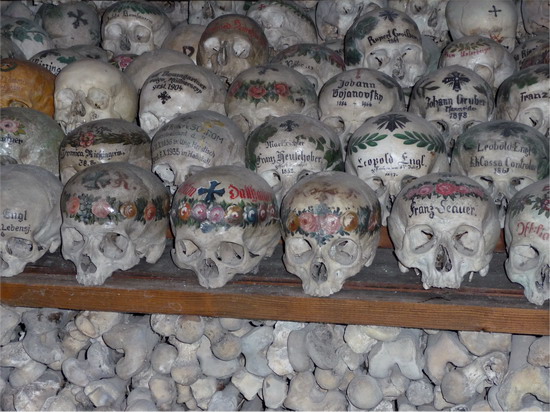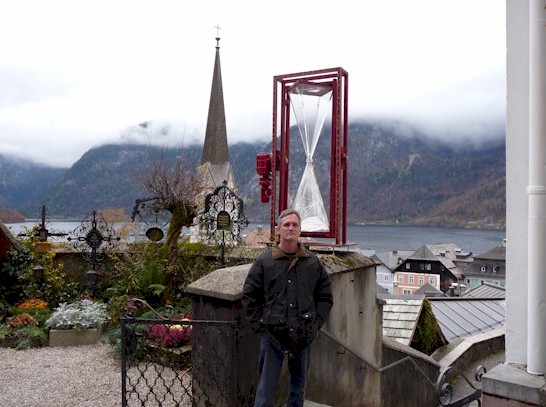| Some of the bones date back to the 1600s; the most recent are
from the 1960s (when the Catholic church began to allow
cremation and the space issues were not so problematic). Many of
the skulls are painted with wreaths of ivy, garlands of roses,
black crosses, and the owners' names, professions, and death
dates. |
|
 |
